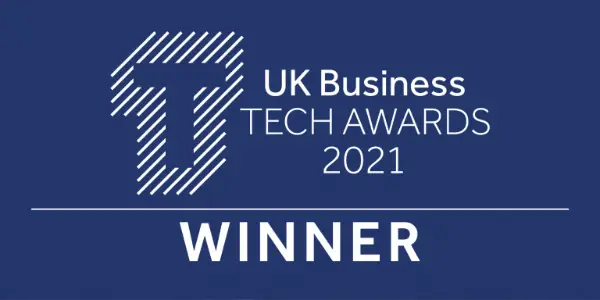We’ve handpicked the trends you need to keep an eye on in 2020, to get ahead of your competitors and boost sales.
The eCommerce market is evolving so fast, it’s hard to keep track of the new trends. 2020 promises to be the year of speed and personalisation as customers demand a fast, efficient and unique shopping experience. We’ve handpicked the trends you need to keep an eye on, to get ahead of your competitors and boost sales.
- Artificial Intelligence
- Social Selling
- Chatbots
- eCommerce-First Companies to Brick and Mortar
- Homepage vs Product Page
- Augmented Reality
- Expanding Fulfilment Options
Artificial Intelligence (AI)
Millennials shop for a unique, positive experience. Without this, customers are more likely to abandon baskets and search elsewhere.
Artificial Intelligence (AI) is saluted as the innovative hero in every industry. Its ability to analyse large volumes of data, make assumptions, test and learn make it powerful. In eCommerce, retailers such as Foot Asylum* are investing in AI and machine learning in the inventory and marketing management, to embrace its capacity in learning patterns and behaviour. It enables retailers to deliver personalised and relevant content to individual shoppers to give a unique customer experience. With AI, retailers acquire the attention (and purchases) from new customers, whilst increasing the likeliness of gaining consumer loyalty.
This upcoming year, using AI means dynamic personalisation. It's expected to be fused across different customer touch points; from web content based off a shoppers first search term to automated emails containing relevant content for consumers. AI has the power to scale personalisation and relevance like never before, saving time, generating accurate insight and, increasing conversion rates.
Social Selling
The power of social networking is not to be underestimated, as social commerce is set to rule 2020. According to Facebook, 70%* of shoppers look to Instagram for product discovery. It’s called for a streamlined process, as social platforms now focus on helping customers purchase products they discover through a small number of clicks.
Product discovery is high within social media. Many browsers end up commenting “where’d you get that from?” on posts to try hunt down that product. Seen as an opportunity, brands now partner with influencers to get products featured in their posts, as well as their on own page. Through a “shop now” button, retailers can direct browsers straight to the product page without leaving the social platform at all. The most common platforms doing this include Instagram’s “Shop Now” button, Facebook’s Page Shops and Messenger, Twitter’s product pages – and Snapchat are soon to feature their own version.
Connecting your product webpages to social media cuts the friction and risk of losing potential sales. Customers no longer have to leave social media to search to find the product they want. Through social selling, it enables retailers to reduce the number of clicks needed to complete a purchase, ultimately increasing sales and revenue.
Chatbots
Being expected to find the answer on your own through a series of clicks can be frustrating. Shoppers that feel abandoned by retailers, end up abandoning their baskets . Hubspot revealed 48%* of consumers would rather connect with a company through a live chat, than any other contact method. By investing in chatbots, it can minimise the friction between a customer and completing their purchase. With smart AI capabilities, automation and little development costs, chatbots create a smooth and human-like experience.
Conversational commerce is growing fast. The personalisation, ease and improvement of the user experience lead customers to a rewarding purchase. Behind its algorithms and access to real-time data, customer insights and traffic patterns, bots can learn from past purchases and predict customer queries to provide engaging content. It’s why 47% of consumers would buy items from a chatbot.
With 300,000 active bots*, Facebook Messenger has taken a lead in the conversational commerce race. Brands can integrate into the messenger to engage customers in real-time interaction, provide support and drive sales. Customers can buy directly from a chatbot (though PLAs), rather than going directly onto the retailers website to find the product. As the customer provides information on size and delivery requirements to the bot, it helps make the purchase journey much faster and easier.
In selected countries, Tommy Hilfiger’s TMY.GRL* chatbot helps shoppers ‘Find Your New Look’ through personalised questions and options. Customers can even add items in their virtual reality basket whilst in the chat. When they’re ready, the bot provides the company’s website checkout page for the customer to complete their purchase. This reduces the friction and risk of customers abandoning their purchase because they had to find the product they wanted - all over again. Ultimately, chatbots lead customers through an easy purchase journey. It’s set to become even more advanced this upcoming year.
eCommerce Companies Explore Brick
and Mortar
It’s no secret, brands thrive when using an omni-channel strategy. By taking advantage of their online and offline channels, retailers can provide a real-world experience to maximise product visibility and increase brand awareness.
But the benefits don’t stop there. Google Local Inventory Ads (LIAs) help curate an integrated multi-channel shopping experience. For shoppers curious as to what an eCommerce retailers’ products look and feel like, the use of LIAs can attract a higher offline, in-store footfall and potentially give a chance to upsell to shoppers. At Intelligent Reach, we can help optimise your campaigns to best benefit your online and offline channels to help you get the best value for LIAs.
So, what’s the trend? Expect to see many “eCommerce first” born brands set up pop-up shops, partner with well-established retailers and co-sponsor events.
Homepages Vs Product Pages
An on-going trend, but it’s set to be amplified in 2020. Internal product pages are more likely to be landed on by new customers, whereas the homepage is often seen by returning visitors. Now, there’s a strong focus on product pages.
Optimising and improving your product pages are important in making new customers who interact with your brand for the first time. With on-point branding and easy navigation it can help secure those sales and increase conversions.
Before optimising your product pages, you need to optimise your product data feeds first to get your products discovered. Although a standard Product Listing Ad (PLA) format generates 60%* of a retailers’ Google search ad clicks, investing in PLA’s is simply not enough. You need to ensure your data quality is rich enough to boost product visibility. Using Intelligent Reach’s Product Visibility Cloud, we can help enrich and optimise product data feeds to help push relevant products in front of customers, who are looking to buy.
Augmented Reality (AR)
There’s always that fear of buying something online and it not being what you thought. The hesitation of customers deciding to purchase a product online leads to abandoned baskets. It’s a common reason as to why retailers lose out on conversions and revenue.
That’s where Augmented Reality (AR) comes in. Home and furniture eCommerce retailers, such as Wayfair have tech-ed up their mobile apps through new AR features to help customers visualise products to help them make better decisions. Wayfair upgraded its ‘View in Room 3D’* for customers to envision how products fit and look in their chosen space. Other brands such as IKEA have also joined the AR revolution, aiming to provide customers with helpful tools as a means for them to shop and complete their purchases, with ease and confidence.
Expanding Fulfilment Orders
The faster technology develops, the faster retailers need to meet their customers’ demands to secure that sale. Because of the ease of technology, shoppers are impatient and more likely to abandon baskets if deliveries or services don’t fulfil their expectations.
With 2020 set to be a speedy year, retailers are finding ways to fulfil their customers’ needs in the most profitable manner. The trends expected to surface are next day deliveries set as the new standard, same-day deliveries expected to take off and drone deliveries are also in sight.












 River Island
River Island